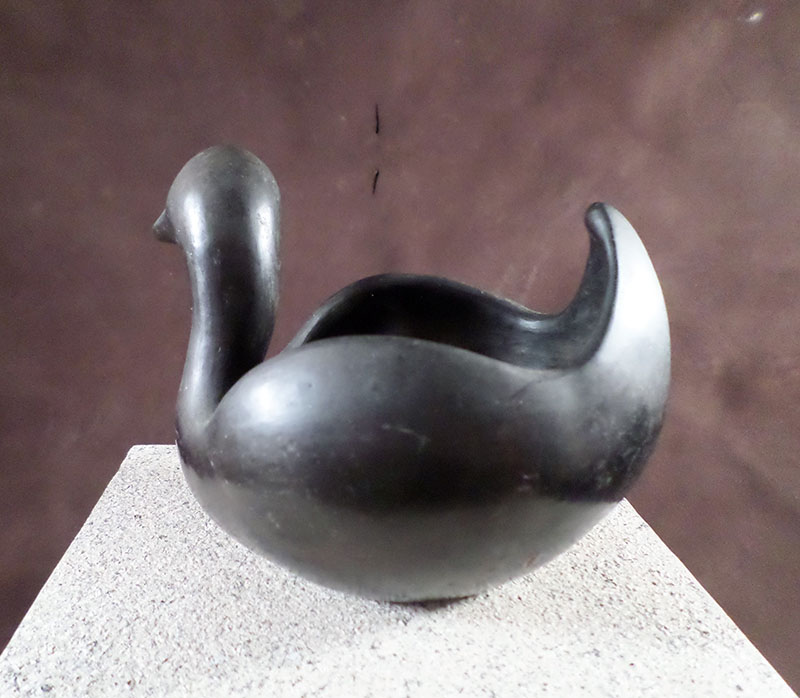The Catawba are indigenous to the Carolinas and the Catawba pottery tradition has survived for over 4,000 years, long before the craft made its debut in the Southwest. The tradition has been passed down within the Nation and has survived contact with Europeans, wars, centuries of economic and cultural stresses, and the introduction of modern technology such as the potter’s wheel. Despite these outside influences, the Catawba pottery tradition has remained one of the oldest and purest art forms of its kind. There has never been a time when this tradition ceased to exist.
When settlers came through to trade with the Catawbas they would buy crafts such as leather moccasins and baskets, but pottery was by far the most popular item. Some settlers became so fond of the pottery that they would only cook certain dishes in a Catawba pot. Eventually the pottery became so popular that groups of Catawba women would travel to settlements to sell their crafts.
The Catawba people have specific methods they follow to create their pottery. From finding the clay, building the pieces, and burning the pottery they have remained close to the traditional ways with few exceptions being made for technological advances that improve their pottery. Clay for traditional Catawba pottery is dug from clay holes along the banks of the Catawba river. Many of the same clay holes that were used hundreds of years ago are still used today. After the clay is hand processed it is then ready for creating pottery. Catawba pottery is formed completely by hand using several different methods depending on the size of the piece. After the piece is finished, it is left to dry for several days. After it is dry then the potter will begin the detail work by rubbing and scrapping the piece by hand. They use many different tools to do this work from seashells, smooth rocks from the river, and old snuff cans. Many potters pass their pottery creating tools down to their children and grandchildren. Burnishing or “rubbing” the pots can be a long and tedious process. After the potter is happy with the piece, then it will be fired in an open fire. The potter warms the piece by leaving it outside the fire and then slowly moves it closer and closer until it is put into the fire. The process of firing gives the pottery its distinctive look. The colors come from the clay along with the variety of wood used and the intensity of the fire.
There were several famous Catawba potters who were known for their art. Many of their pieces can be found in museums and in art collections. Even though societal changes led to a decline of pottery making, the tradition has been revived and is still passed down today. About 50 adult Catawbas make and sell pottery on a regular basis. Catawba children are being taught the craft in the children’s programs that are run by the Nation and there are also pottery classes for adults taught at the Cultural Center with hopes of keeping the tradition alive.
Due to the importance of pottery in the Catawba culture the Nation is committed to making sure that there are always Catawba potters to teach this skill to others so that this 4,000-year-old tradition can continue to be passed on to future generations.


